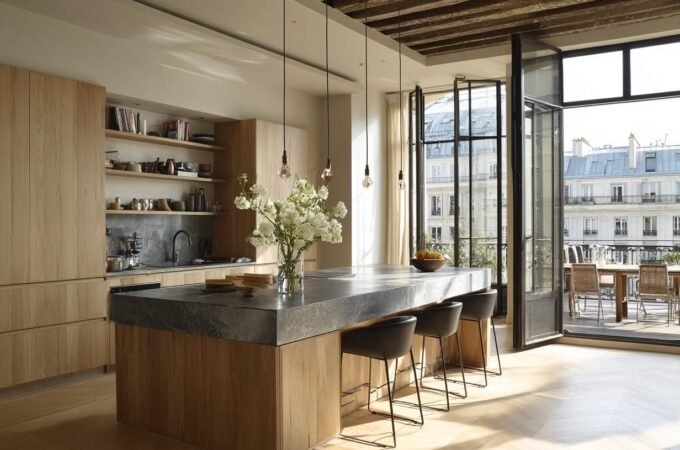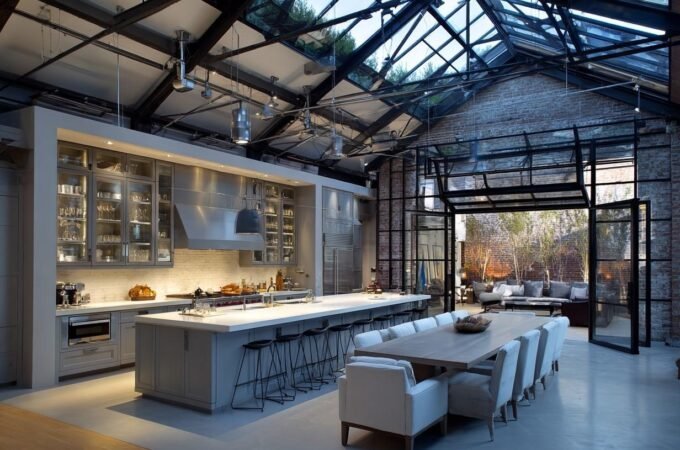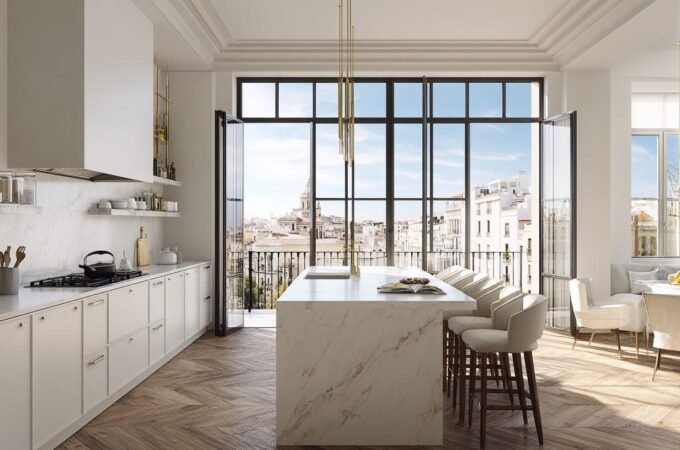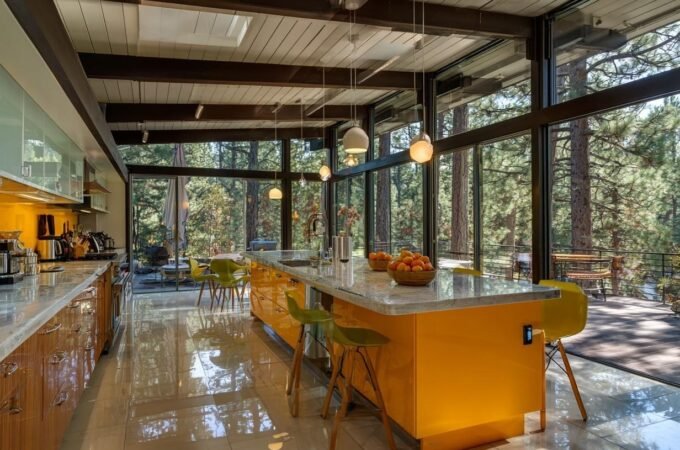
Why Every Single Designer Still Recommends Shaker Cabinets
If you ask ten kitchen designers what door style they trust most, nine will say the same thing: Shaker.
This simple, strong, and clean look has been winning for more than a century. It works in modern apartments and classic farmhouses, tiny galley kitchens and big open plans. In short, Shaker cabinets are the safe bet that still feels fresh.
In this guide, we’ll break down why the shakers cabinet style keeps getting the green light, how to use it in your space, and the small choices that make a big difference.
What Exactly Is a Shaker Cabinet?
A Shaker door has five pieces:
- a flat center panel
- two vertical “stiles”
- two horizontal “rails”
That’s it. No curves. No heavy carvings. Just a squared frame with a flat middle. The look is balanced, calm, and easy to live with. Because it’s so simple, it blends with many design styles: modern, transitional, coastal, farmhouse, Scandinavian, and even industrial.
Why Designers Keep Choosing Shaker
1) Timeless Style That Doesn’t Date
Trends come and go—slab gloss, heavy crown, raised panels—but Shaker stays. Its clean lines won’t scream “2020s” or “2010s” ten years from now. That makes it perfect if you plan to live with your kitchen for a long time or want top resale value later.
2) Works With Any Color or Material
Because the design is simple, colors and finishes do the talking:
- White for bright and airy
- Soft gray for a calm, modern vibe
- Navy or forest green for a bold, rich look
- Black for dramatic, sleek style
- Natural wood (like white oak or walnut) for warmth and texture
Shaker pairs easily with quartz, marble, butcher block, stainless steel, brass, matte black, and more. It’s a true team player in any palette.
3) Fits Many Budgets
You can find the shakers cabinet style in RTA (ready-to-assemble), semi-custom, and fully custom lines. That means you can get the look whether you’re doing a budget refresh or a full high-end build. Its simple construction also helps keep costs predictable.
4) Durable and Repair-Friendly
Fewer fussy details mean fewer weak points. The flat center panel is less likely to chip than ornate profiles, and touch-ups are easier. If you ever need to replace a door, matching a Shaker profile is far simpler than tracking down a fancy carved style.
5) Easy to Clean
With no deep grooves, you won’t be scrubbing dust out of tight corners. A gentle cleaner, a soft cloth, and you’re done. For busy homes, this is a quiet win you’ll notice every week.
6) Makes Small Kitchens Look Bigger
The straight lines and flat center panel reduce visual clutter, so tight kitchens feel more open. Choose light paint (white, cream, pale gray) and simple hardware to boost the effect.
7) Strong Resale Appeal
Real estate agents often note that buyers respond well to Shaker because it looks “new” and “classic” at the same time. If you plan to sell, this style protects your investment better than a trend-heavy choice.
Classic vs. Modern: Two Readings of Shaker
Shaker is like a neutral outfit—you style it to fit your mood.
Classic Shaker
- Colors: white, cream, soft gray
- Hardware: brushed nickel, chrome, or simple cup pulls
- Counters: marble-look quartz, light butcher block
- Extras: classic subway tile, framed glass uppers
Modern Shaker
- Colors: deep navy, black, olive, or natural white oak
- Hardware: long linear pulls in matte black or brass
- Counters: bold-veined quartz, concrete, or soapstone
- Extras: slab backsplash, open shelves, integrated lighting
Both are still Shaker. Both look great. It’s all in the details.
Finish Guide: Paints and Woods That Always Work
Painted
- Pure White: bright, timeless, reflects light
- Warm White/Cream: softer, hides smudges better
- Greige/Taupe: cozy and neutral
- Navy/Green/Black: statement colors that still feel refined
Wood
- White Oak: subtle grain, upscale, light Scandi vibe
- Maple: smooth, even tone, takes stain well
- Walnut: rich, dramatic, perfect for two-tone designs
Pro Tip: For painted doors, choose a satin or matte sheen. It hides fingerprints better than high gloss and looks more high-end than flat.
Hardware That Elevates Shaker
Switching hardware can change the whole mood:
- Matte Black Bar Pulls: crisp, modern, graphic
- Brushed Brass Knobs/Pulls: warm, elegant, on-trend but classic
- Brushed Nickel/Cool Chrome: clean and timeless
- Mixed Metals: black on uppers, brass on lowers (use sparingly and repeat the mix elsewhere—faucet, lighting—to make it feel intentional)
Size matters: Longer pulls on base cabinets look modern and make drawers easier to open. Small knobs can feel classic and understated on uppers.
Layout Tips That Make Shaker Shine
- Two-Tone Scheme: Keep uppers light (white or oak) and go richer on lowers (navy, black, walnut). This grounds the room and makes ceilings feel taller.
- Frame the Range: Use a simple Shaker hood or a wood-wrap to create a focal point.
- Glass Doors (sparingly): One or two glass-front uppers keep things light without turning your kitchen into a display case.
- Open Shelf Moment: A short run of oak shelves breaks up the boxes and adds warmth.
- Tall Pantry Pull-Outs: Clean door faces + hidden storage = peak Shaker practicality.
- Panel-Ready Appliances: If budget allows, panel your dishwasher or fridge. The uninterrupted Shaker fronts look incredibly custom.
Countertops and Backsplashes That Always Match
Countertops
- Marble-look quartz: classic veining, zero fuss
- Soapstone or black quartz: moody, modern contrast
- Butcher block: warm, affordable, especially on an island
- Concrete-look quartz: industrial edge with easy care
Backsplashes
- Classic subway tile: white, handmade-look, or oversized for a modern twist
- Slab backsplash: same material as countertop for a luxury, seamless feel
- Square zellige-style tiles: soft shine, slight texture, artisan vibe
- Vertical stack: skinny tiles stacked straight for a modern read
Lighting That Completes the Look
- Under-cabinet LEDs to wash the flat panel and keep counters bright
- Pendant lights with simple shades or soft brass over the island
- A statement fixture in the dining area ties finishes together
- Warm bulbs (2700–3000K) to keep paint colors and wood stains cozy
Common Mistakes (And Easy Fixes)
- Too Many Fancy Add-Ons: Shaker loves restraint. Skip heavy crown, carved corbels, and busy moldings. Choose one or two highlights, not five.
- Overcrowded Upper Cabinets: If everything feels boxy, swap one section for open shelving or glass doors to break the rhythm.
- Hardware That’s Too Small: Tiny knobs get lost on wide drawers. Use long pulls for drawers 24″ and wider.
- Ignoring Sheen and Finish: High-gloss paint shows smudges. Stick to satin or matte for a softer, richer look.
- One Flat Color Everywhere: Bring in texture—wood accents, veined counters, or handmade tile—to avoid a sterile feel.
Cleaning and Care (The Simple Routine)
- Wipe spills quickly with a damp microfiber cloth
- Use a mild soap—avoid harsh chemicals or abrasive pads
- Dry wood fronts after cleaning to protect the finish
- Tighten hardware once a year to keep doors aligned
- Add soft-close hinges if you don’t already have them (they’re affordable and make a big difference)
Budget Plays Designers Actually Use
- RTA Shaker boxes with upgraded hardware = save big without losing style
- Standard boxes + custom island = one “wow” piece without blowing the budget
- Paint existing Shaker doors if your boxes are solid (hire a pro sprayer for a smooth finish)
- Swap hardware and lighting to refresh a tired kitchen in a weekend
Mini Guide: Shaker, Slim Shaker, and Bead-Detail
- Standard Shaker: 2–2.5″ rails and stiles; the universal classic
- Slim Shaker: 1–1.5″ rails and stiles; sharper, more modern
- Bead-Detail Shaker: subtle inner line; a hint more traditional without going ornate
If you want the calm look of Shaker with a tiny twist, Slim Shaker is the designer’s go-to right now.
Quick FAQs
Is Shaker too plain?
Not when you style it right. Your colors, counters, hardware, and lighting add personality.
Will Shaker go out of style?
Very unlikely. Its simple geometry is what makes it timeless.
Paint or wood?
Both are great. Paint is crisp and flexible; wood adds natural warmth. Many designers mix them: wood island, painted perimeter.
Is the shakers cabinet style good for rentals?
Yes. It’s durable, easy to clean, and appeals to most renters and buyers.
What if my kitchen is tiny?
Choose light uppers, simple hardware, and good under-cabinet lighting. Shaker’s clean lines help small spaces feel bigger.
Sample Palettes That Just Work
Bright + Airy
- White Shaker uppers
- Pale gray Shaker lowers
- Marble-look quartz
- Brushed nickel hardware
- White subway tile
Warm Modern
- White oak Shaker throughout
- Matte black bar pulls
- Warm white quartz with subtle veining
- Taupe grout stacked tile backsplash
Bold Contrast
- White uppers, navy lowers
- Brass hardware
- White quartz with bold gray veins
- Globe pendants in brushed brass
Moody Luxe
- Black Slim Shaker lowers, white uppers
- Mixed black and brass hardware
- Soapstone-look quartz
- Slab backsplash for a seamless statement
The Bottom Line
Designers keep saying “Shaker” because it solves real problems without creating new ones. It’s timeless, flexible, easy to clean, budget-friendly, and universally appealing.
Whether you’re planning a full renovation or just a smart refresh, the shakers cabinet style gives you a high-end look that lasts.
Choose your color, pick hardware that matches your vibe, add the right lighting, and let Shaker do what it does best—make your kitchen feel calm, beautiful, and built to last.




